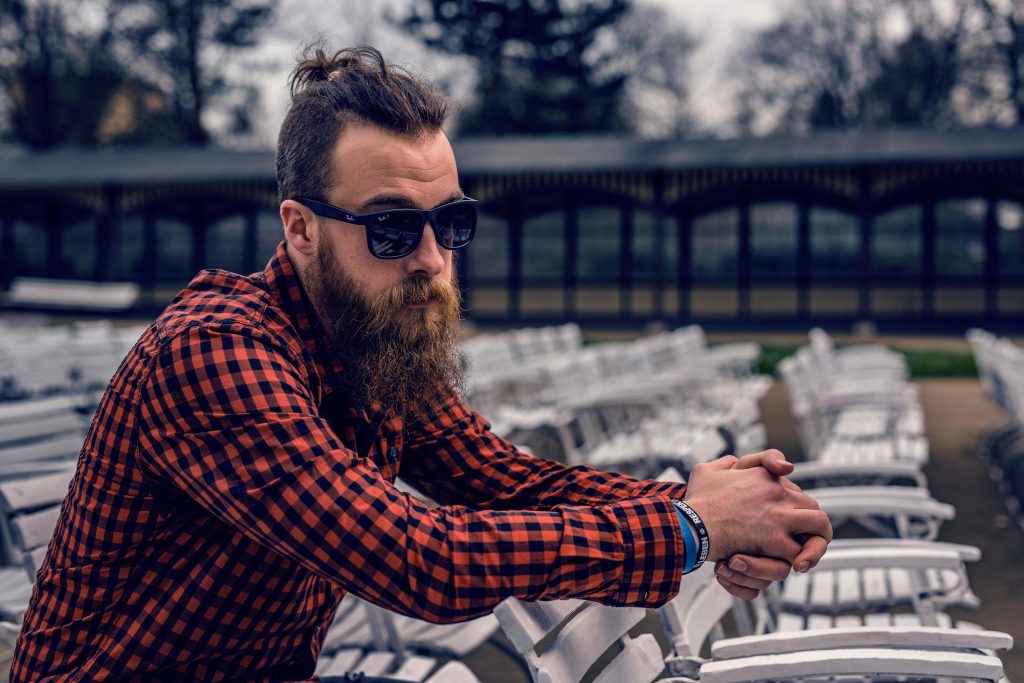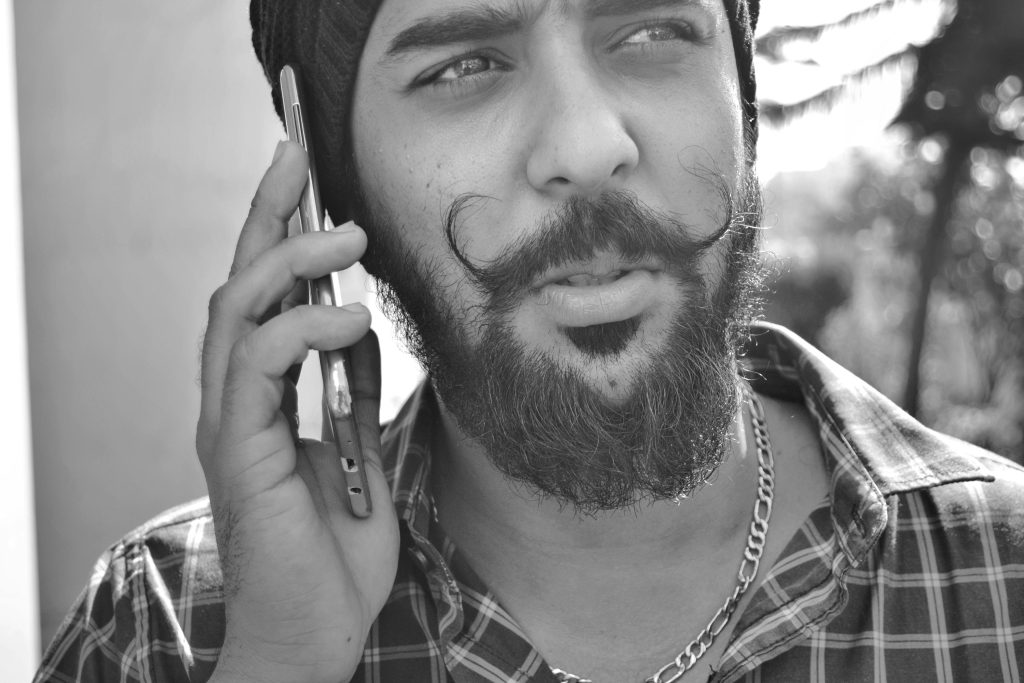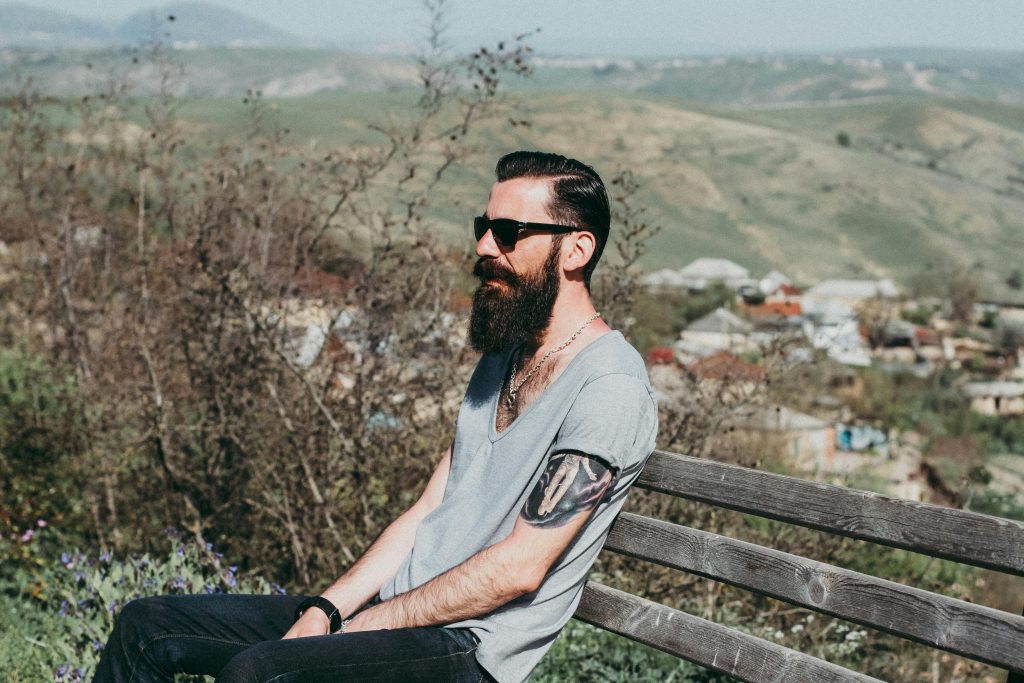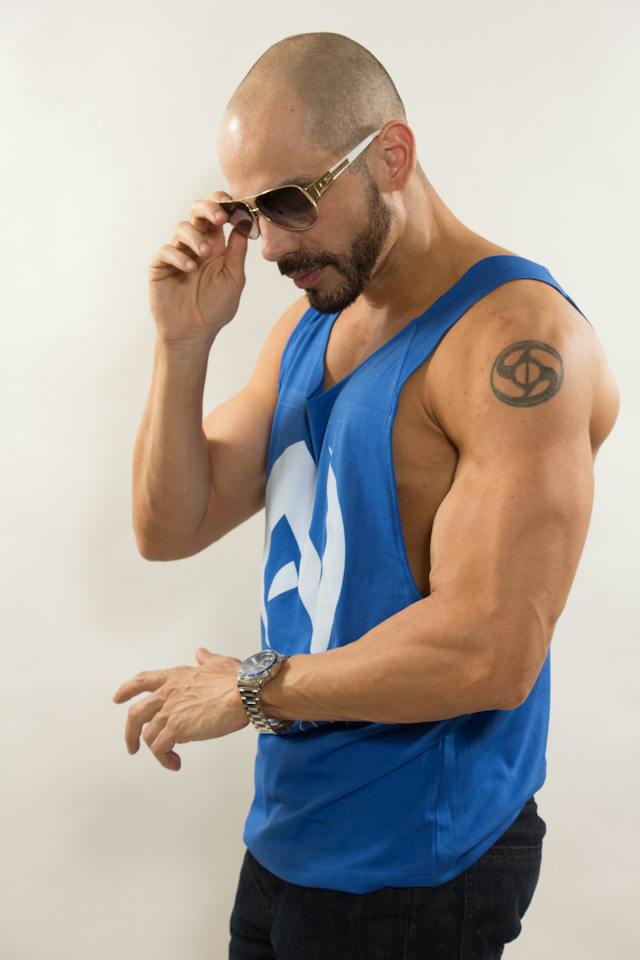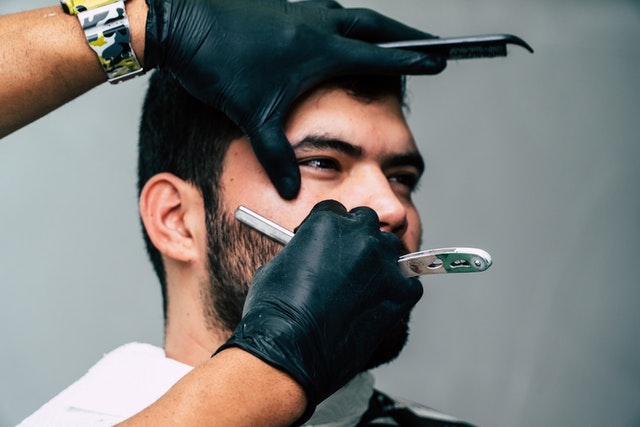Conflicting opinions on ultraviolet (UV) radiation’s effects on facial hair circle around. Some people claim clear skies are beneficial for beards and mustaches. Others warn against sunbathing when trying to grow impressive facial hair. Which side of the fence is right?
The truth lies in the middle. Understand how the sun influences facial hair growth to know how therapeutic and destructive it can be.

Does Sunlight Stop Facial Hair Growth?
No, sunlight doesn’t stop facial hair growth. On the contrary, the sun stimulates it. Solar radiation helps you grow the Chevron, a burly beard, a goatee, mutton chops, sideburns or whatever style your DNA permits. That’s because it’s an essential ingredient for vitamin D production.
Sunlight contains ultraviolet B (UVB) light that turns a chemical in your skin into vitamin D. Healthy levels of vitamin D — as well as vitamins A, B7 and C — allow your body to generate plenty of testosterone and convert some of it into dihydrotestosterone, a hormone vital in facial hair growth.
Timing matters to produce an adequate amount of this sunshine vitamin. The best time of day for sun exposure is midday. Experts suggest exposing your face, hands, arms and legs to sunlight without protection for 5-30 minutes between 10 a.m. and 4 p.m. is crucial in preventing vitamin D deficiency. This period lets you get a safe dose of UVB radiation efficiently.
The recommendation may not apply to all, though. Race plays a role in vitamin D production because of melanin. This pigment is responsible for skin color and is a natural sunscreen protecting skin from damage from excessive sunlight exposure.
People with more melanin have to spend more time under the sun than those with less of it to stimulate facial hair growth. That’s why lighter-skinned individuals can produce sufficient vitamin D fast. In contrast, darker-skinned people need more prolonged UV exposure to create the same amount of the nutrient.
Does UV Light Stop Hair Growth?
UV light is a double-edged sword. It doesn’t stop hair growth but can damage beards and mustaches. This solar radiation can burn away the protective oils coating individual strands. Without them, your facial hair is more vulnerable to sun damage.
The more brittle your hair becomes, the less effective it is at safeguarding the skin underneath from UV rays. Less natural protection against sunlight increases your risk of skin diseases, including cancer.
Moreover, UV can change hair color. Overexposure to this invisible light can break down your hair’s melanin pigments, causing any hair on your face to appear lighter. Melanin helps combat the undesirable effects of excessive sun exposure, so losing it in your hair is bad news for your health.
How to Ensure Healthy Facial Hair Growth When It’s Sunny
Follow these five tips to grow and maintain healthy facial hair during months when the sun is at its most intense.
1. Limit Sun Exposure
Rule number one is to catch some sun moderately. What’s moderate depends on your natural skin color. If you have lighter skin, you only need a small window to produce enough vitamin D your body needs to grow facial hair, so avoid basking — or baking — in the sun for too long.
Aside from damaging your facial hair, getting too much UV radiation increases your risk of skin cancer — a growing health concern. It affects more people than other cancers. Skin cancer is so prevalent no less than 20% of Americans will likely get it by the time they reach 70.
Avoiding UV rays is challenging anywhere, even at home. The sun can penetrate your indoor spaces deeply, leaving you with few hiding spots. Fortunately, there are viable solutions to protect yourself without wearing sunscreen. Growing trees and thick foliage around your home or switching to energy-efficient windows will significantly reduce your chance of unexpected UV overexposure.
2. Moisturize With UV Protection
Using a moisturizer prevents dryness due to washing your facial hair during warm months. Choose a product with Sun Protection Factor 30 or higher to keep your beard hydrated while rendering most of the UV radiation hitting your face harmless.
3. Put a Premium on Grooming
Split ends indicate damaged hair. You can’t undo them, so you should trim them to give your facial hair a chance to regrow stronger and healthier.
Contrary to popular belief, shaving your face doesn’t accelerate facial hair growth rate. Observe how fast your beard can grow to your desired thickness to determine your suitable trimming frequency.
If you have a patchy beard, shave off the sparse strands to look neat because they’re too far from each other to cover your skin. Use a traditional razor instead of an electric trimmer to avoid having a five o’clock shadow.
4. Wear Sunscreen
Applying sunscreen to your facial hair sounds strange, but it works like a charm. Utilize a moisturizer with SPF to both keep your beard feeling fresh and protect it from the sun. It can protect your beard from sun damage if you coat your hair with it thoroughly and reapply it every once in a while.
While you’re at it, use some on the skin under your beard. It can complement your facial hair’s sunlight-blocking prowess, keeping the skin where your beard grows healthy. Keep in mind that you’ll want to utilize a chemical sunscreen to avoid leaving a white cast on your skin.
5. Wear a Beard Cover
A beard cover is more of protective gear than a fashion item. It’s something you wear when you have to be under the sun in unshaded areas for long periods because of your job.
This device can only block some sunlight because it’s porous. Still, it’s better than wearing nothing and leaving your facial hair bare.
Healthy Is the Beard the Sun Shines On
Sunlight is a non-negotiable requirement to grow as much facial hair as your genes let you. UV rays can be damaging, but they’re not the enemy — overexposure is. Be mindful of how much daylight your skin absorbs and when you receive it to stay in the shade no less than you must.
